Remember when recruiting on social media was considered cutting-edge? Fast forward to today, social recruiting is one of the most popular ways to find talent – but it’s not the only way. There are many other clever and creative recruitment strategies to deploy when looking for your next all-star.
In this blog post, we’ll explore what recruitment strategies are, dissect a few great examples, and unveil 11 of the most effective recruitment strategies to help your business find and hire top talent.
TL;DR – Key Takeaways
- A recruitment strategy is a plan of action outlining how the company will acquire talent, including what methods and tools will be used to achieve a pre-determined goal.
- A good example of a recruitment strategy starts with a specific goal, like nurturing diversity in the organization, details which recruitment methods will be used to meet the goal, like remote and skills-based hiring, and includes information on which tools are needed.
- There are many recruitment strategies out there, but some of the most effective examples include building a strong employer brand and talent pool, optimizing your sourcing strategies and social recruiting, and putting diversity first.
- With Toggl Hire’s expertise in skills testing, you can optimize your recruitment efforts and unlock the full potential of these innovative recruitment strategies.
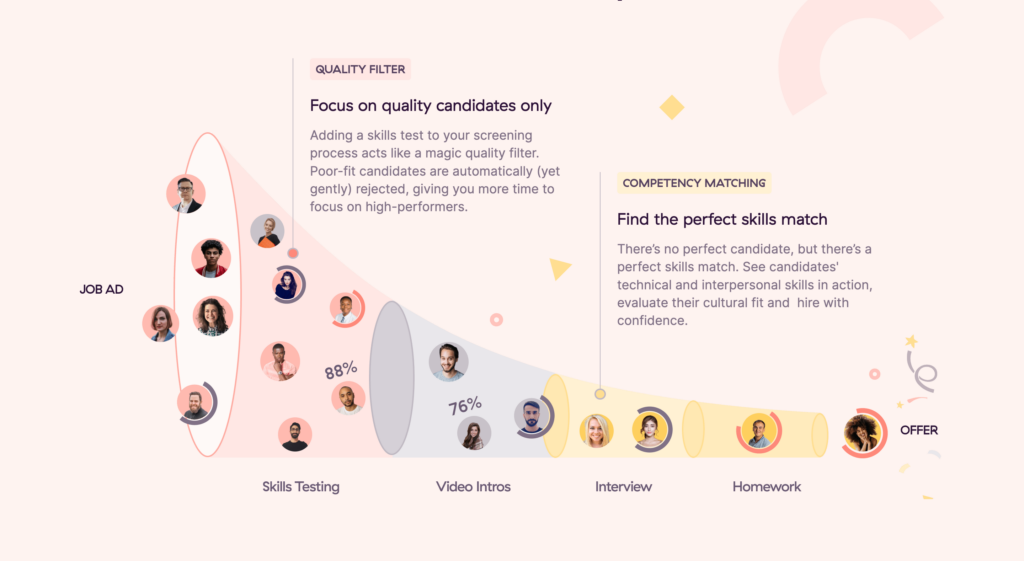
What is a recruitment strategy?
A recruitment strategy is a well-defined hiring plan that outlines the approach an organization chooses to attract, evaluate, and hire people to fill their open positions – and can be used at any step of the recruitment process. For example, you could develop a recruiting strategy to boost candidate applications, or you could create one to improve employee retention.
To choose the best recruiting strategy, a company should first identify its strengths and weaknesses – which parts of the recruitment funnel are working and which need improvement – and understand how the hiring process fits into its big-picture goals.
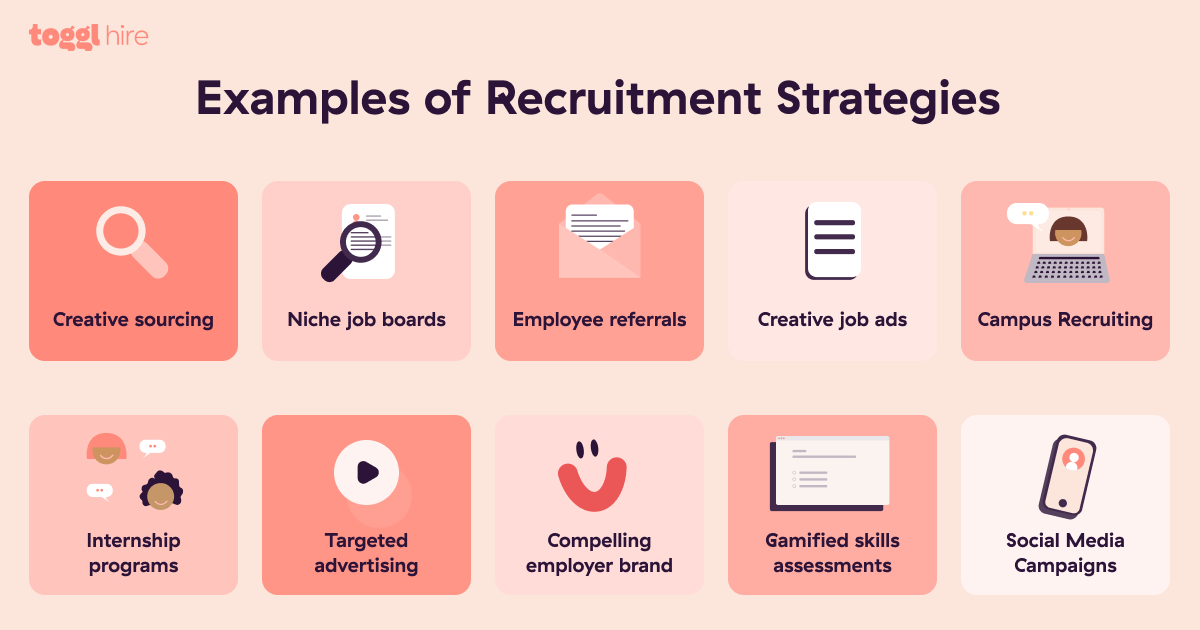
A good example of a recruitment strategy
A good recruitment strategy should include all the tools, tactics, and goals required to bring in the best talent to drive business growth.
Let’s look at a practical example, like campus hiring. An organization with a clear growth plan and a specific profile of an employee for hard-to-fill roles might choose to create a recruiting strategy around acquiring talent early in their career – it’s a less competitive market but one that’s relatively easy to target!
Alternatively, a leading tech company looking to nurture diversity to help foster greater innovation could adopt a “Hackathon Hiring” approach. By hosting coding competitions open to a global audience, the company could identify exceptional talent from various backgroundswhile showcasing the company’s commitment to diversity and innovation.
Acquiring the right talent is the most important key to growth. Hiring was — and still is — the most important thing we do.
Marc Benioff, Chairman, Founder and CEO of Salesforce
3 things to consider before developing a hiring strategy
To reiterate, a good recruiting strategy will include all the necessary details on how you plan to achieve a set goal. So, before you can start developing any kind of strategy, it’s important to keep these three things in mind:
#1 Recruitment goals
This can be a short-term objective, like onboarding 10 new hires before the end of the year, or a longer-term goal, like improving your employer branding across the US market. Just remember that goals should be specific, measurable, and aligned with the company’s long-term vision. And with the goals set, you’ll want to agree on the right recruitment metrics to monitor the progress.
#2 Recruiting process
When thinking through the steps to take in your recruiting process, from job posting to onboarding, it’s essential to keep your recruitment goals in mind. For example, if the goal is to onboard quickly, you’ll need a recruitment process that’s fast and efficient. Or, if the goal is to increase diversity, you’ll need to focus on inclusive best practices to achieve this goal, right down to the language used in the job ad.
For instance, at Toggl Hire, we aim to find the best candidates while maintaining a great candidate experience. This is what our recruitment process looks like:
- A 15-minute skills test to evaluate candidates‘ core skills quickly
- When we hire for customer-facing roles, we use Video Intros for additional screening
- A short homework assignment to identify the most qualified candidates
- An interview with the hiring manager to confirm cultural alignment
- A paid test week to get proof of competence and conduct peer interviews

We track metrics like best candidate sources, percentage of candidates over test threshold, applicant satisfaction score, drop off rate and speed to hire to identify areas of improvement in our recruiting process.
#3 Recruitment tools
Recruitment tools like Applicant Tracking Systems (ATS), skills assessments, and automation software have become an essential part of the recruiting process because they help to:
- Streamline the hiring process
- Save hiring teams significant time and money
- Improve the candidate experience
- Reduce the risk of mis-hires
But to know which tool is right for you, you’ll need to refer back to your chosen recruitment goals and interview process to help you decide. For example, skills testing is an excellent tool to speed up candidate screening but would need to be combined with an efficient selection process if the goal is to hire more efficiently.
11 Best recruitment strategies to find qualified candidates
Now that we understand what recruiting strategies are and the main things to consider when developing one, let’s dive into our pick of the best recruiting strategies and tactics, and why they work.
1. Work on your employer brand
Employer branding plays a major role in attracting, hiring, and retaining great talent. In fact, 72% of recruitment leaders agree that it has a significant impact on hiring success and employee satisfaction.
Your employer brand is what makes people want to work with you and for you. Think about companies like Apple, Patagonia, Nike, and Netflix. Each has a clear mission, identity, and tone of voice that helps them stand out as industry leaders – as well as a compelling employee value proposition.
Granted, they’ve been around for a while now. But even newer companies stand to gain from strategic employer branding. Take Revolut, for example. The global finance app went from series A funding to raising a whopping $800M in series E in the space of just five years. To reflect their incredible journey and mission, they created a unique campaign under “never settle” to attract potential candidates to their brand.
How can you implement this recruitment strategy?
Start by identifying which areas of your employer brand needs work. Everything from your job ads to writing creative job descriptions to the perceived company culture falls under your employer brand – so you’ll need to investigate thoroughly to decide what needs work.
You’ll also need to engage with other departments, such as marketing and communications, to build a brand that candidates want to work for. Key employer branding elements to focus on include:
- EVP – The promise you make to potential candidates in return for their commitment to your company. Promises like “Create a world where anyone can belong anywhere” from AirBnb help to crystalize your brand’s value proposition.
- Careers page – A major opportunity to showcase your employer brand with videos, testimonials, and information on the hiring process.
- Recruitment marketing materials – Refers to all the touchpoints and ways in which you market your company to candidates, long before they’re even ready to fill out an application.
- Employee ambassadorship – Another powerful tool when marketing your company brand, as brand ambassadors are perceived as more credible than corporate marketing messages.
- Job postings/ads – Actually your last chance to convince prospective candidates to apply.
Create a desirable employer brand, and we promise you that attracting great candidates becomes a whole lot easier!
Check out our guide to employer branding to create the foundation for your other recruitment strategies to build from. And learn more about the difference between employer branding and EVP to get this recruitment strategy right.
2. Polish your ideal candidate profiles
Creating an ideal candidate profile for every role is far from a waste of time. When used correctly, it can become an invaluable hiring tool, used to:
- Create better job descriptions
- Improve sourcing strategies
- Lead to better quality of hire
How can you implement this recruitment strategy?
Don’t let your ICPs gather dust! For them to work, you need to continually review and refresh your ICPs for every new role, by following these 7 steps.
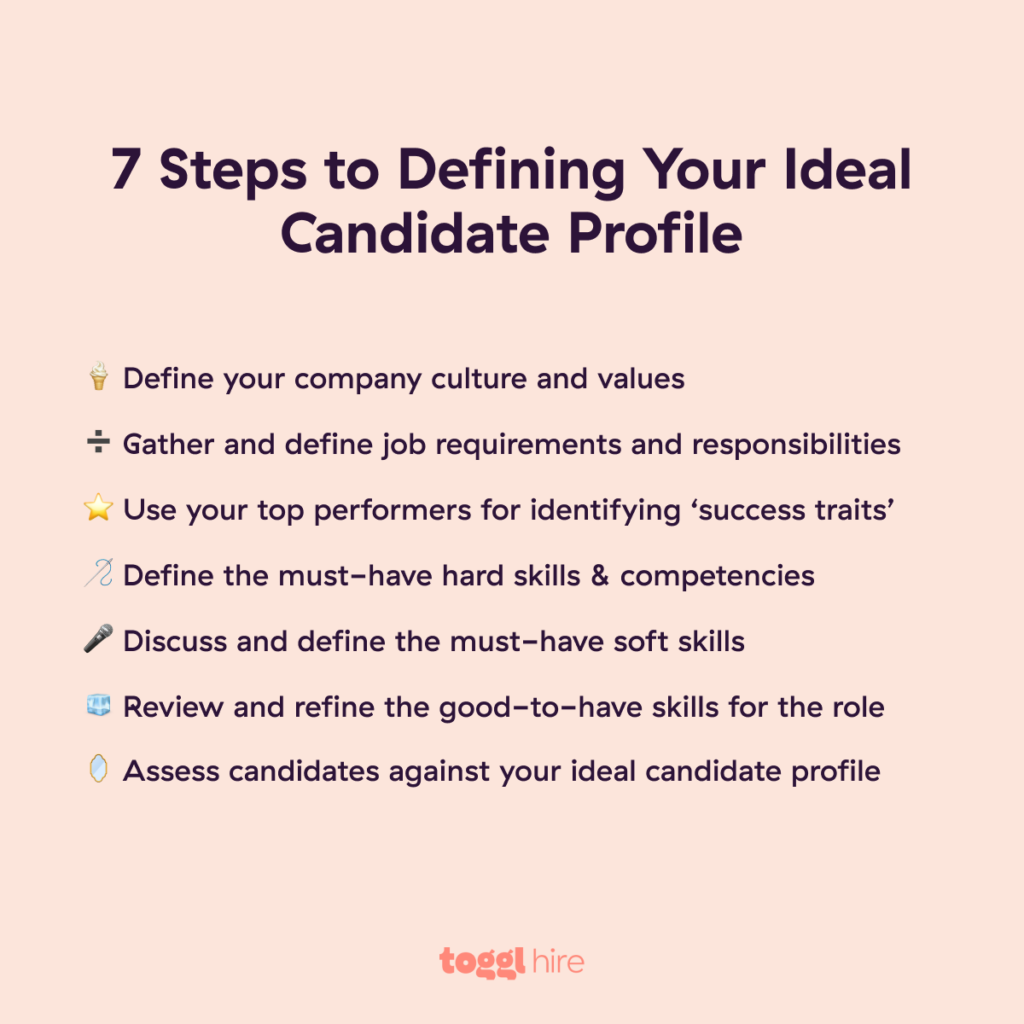
Conduct a thorough job task analysis for every new role – giving you the data you need to create accurate job descriptions, as well as helping to identify skills gaps and benchmark performance standards.
3. Optimize your candidate sourcing process
Sourcing is the first stage of your talent acquisition process, and refers to all your combined efforts to find and attract potential applicants to your company and/or a specific role. That includes how you target both active and passive applicants.
Given that 85% of the workforce don’t even scan job boards, optimizing this stage of the recruitment process, can bring big rewards.
How can you implement this recruitment strategy?
Start by conducting a review of your sourcing methods, and cross-check your current strategy with other creative candidate sourcing ideas. For example:
- Use external recruiters or headhunters
- Try new channels for job postings and advertising
- Open up your vacancy to remote hires
- Subcontract employees for a temporary project or position, like a maternity cover
- Incentivize more employee referrals
- Tap into your database of past applications
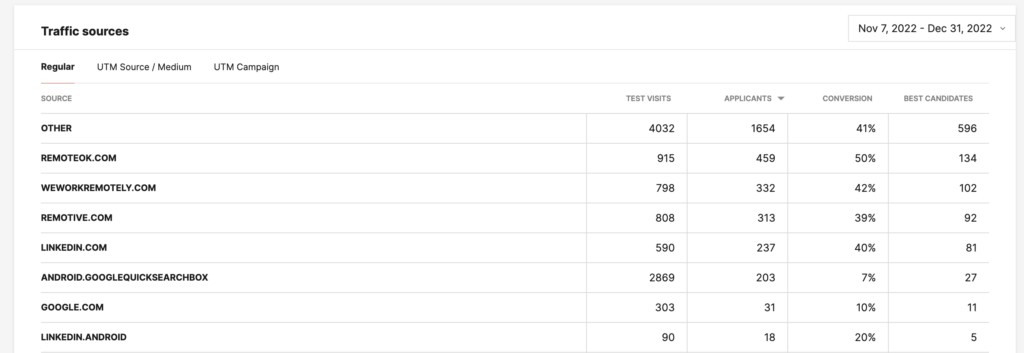
Dive into our recruiting metrics guide to understand what sourcing metrics you should be tracking. Plus, there’s a free template in there to help you get started straight away!
4. Attract passive candidates
According to research, 70% of the world’s talent sits in the passive market, just waiting to be made aware of better opportunities. Now then, given that passive candidates aren’t actively looking for new roles, it’s important to realize that you aren’t going to engage with them on job boards.
Instead, you need to adopt a long-term talent acquisition philosophy, to help make sure you get seen by passive talent way before they’re looking for a new role. So that when they are eventually on the market, they’ll think of you!
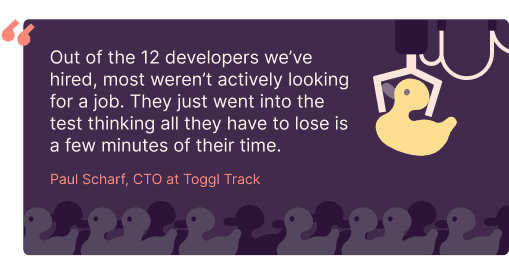
How can you implement this recruitment strategy?
There are many ways to get the attention of passive candidates, for example:
- Create a strong employer brand – as we saw before, employer branding is one of the most powerful ways to get the attention of passive candidates.
- Gamify your application process with skills tests – we’ve seen first-hand how effective skills testing can be in capturing the attention of passive talent.
- Be seen on social media – whatever space you’re in, your company’s social media profiles can be used as tools to convert your passive followers into active candidates.
Explore our tips for attracting passive candidates and start devising your recruitment strategy. Curious about gamifying your application process? Browse our skills assessment templates to get inspired!
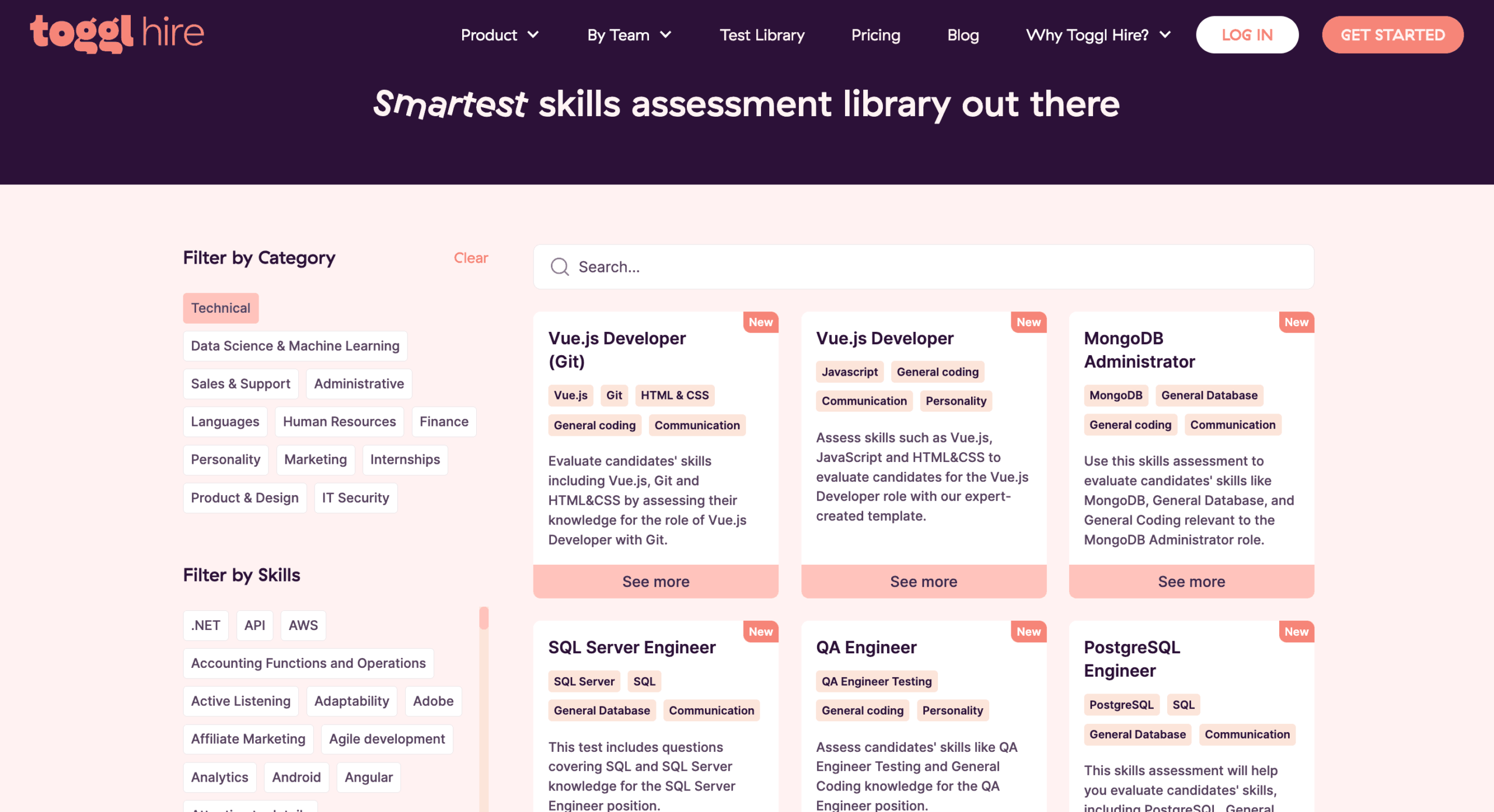
5. Put diversity first
Finally, what we’ve all known has been proven. Diversity and inclusion in the workplace not only helps to level the playing field for minority groups, it also carries many real business benefits:
- Diverse teams are up to 35% more effective
- They are 87% better at making decisions
- And according to research by McKinsey, the most diverse companies are more likely to outperform their less diverse peers on profitability, too!
Given those stats, and in this day and age, you really shouldn’t need any more convincing when it comes to putting diversity first.
How can you implement this recruitment strategy?

Global pharmaceutical company and top ranking employer Novartis is a leading example of putting diversity first. Of course, being a large company with big responsibilities, their diversity initiatives have grown to the point of needing a Chief Diversity & Culture Officer. But even long before your company’s culture gets to that level, there are still many things you can do:
- Pay close attention to job postings and descriptions to check for inclusive language
- Try blind hiring and anonymous applications
- Remove bias with skills tests and unconscious bias awareness initiatives
- Switch up the job boards you use and try including niche job boards that specialize in a particular sector, field, or skill set
Get on Google and start searching for job boards tailored to your niche. Simply search for ‘your role’ + job boards – for example ‘marketing + job boards‘. And for more diversity ideas, explore our blog on 8 Ways to Boost Diversity & Inclusion in Your Recruitment Process.
6. Create a talent pool
In the world of recruitment, one of the biggest challenges is often sourcing suitable candidates, with the skills and experience you need. One way to tackle this problem is to keep a list of vetted candidates on standby by building a high-quality talent pool.
However, a great talent pool isn’t just a list of names and phone numbers. A properly curated talent pool provides rich information on each potential candidate, including their:
- Experience
- Hard & soft skills
- Attributes
- Career goals
- Cultural fit to your organization
- Suitable roles
If you’re going to implement any long-term recruitment strategies, building a talent pool is one we’d definitely recommend. Not only will it boost your speed to hire, but it will also reduce costs and help keep the best candidates engaged with your business.
How can you implement this recruitment strategy?
The first step is to acknowledge all the different methods that can contribute to your talent pool.
For example:
- Candidate sourcing campaigns
- Leads from career events
- Software like Toggl Hire that helps to keep track of all applicants – including unsuccessful applicants that may be suited to a different or future role
- Community
- Passive candidates
- Candidate profiles on platforms like LinkedIn, Github, and UpWork
The second step is to start exploring different strategies and best practices for creating and maintaining a robust talent pool.
For example:
- Sorting and Segmentation – to extract the most value from your existing talent pool and remain organized when growing it, you’ll need to segment by attributes like job function, skills, experience level, location, and interests.
- Nurturing and Engagement – it’s not enough to simply collect and sort candidate details, you need to stay connected with candidates in your talent pool through things like social media, events, and outreach.
- Personalization – when the time comes to recruit from your talent pool, your segmentation will prove invaluable, but it’s also essential to personalize your communications to help build and maintain that relationship.

Do some research on how to build a great talent pool here. Then start putting the techniques into action, starting with your recruiting team reaching out to previous candidates.
7. Develop an employee referral program
Employee referral programs aren’t new, but getting them right is still tricky. Asking your current employees to refer great people from their network is an effective way to connect with outstanding talent. And what makes this recruitment strategy so sought-after is that it’s free!
Employee referrals are one of the best recruitment strategies because:
- Referred candidates have lower turnover rates
- They’re better quality hires
- They help reduce your time to hire
- They’re cost-effective for sourcing
How can you implement this recruitment strategy?
The trick with employee referral programs is to strike a balance between incentivization and quality. You want your staff to actively refer people from their network, but not their low-quality connections.
But the good news is, building employee referral programs is quick, low-cost, and delivers qualified candidates fast! No wonder it’s one of the favorite recruitment strategies among technical recruiters.
8. Nail your social media recruiting efforts
The rise of digital technology and social media has fundamentally changed the way candidates and recruiters interact. It’s clear to see that the use of digital hiring strategies and social media helps recruiters find, engage and acquire the best talent on the market.
Here are some stats to back this up:
- 79% of job seekers have used social media in their job search in the last year.
- 81% of job seekers want more job opportunities listed on Facebook.
- Candidate application rates increase 34% when the job postings include a video.
The fully remote workflow automation company Zapier is a great example of social recruiting in practice. The company uses innovative ways to engage and connect with its target audiences and prospective job candidates. For example, during the summer, the company posted the results from its first “no-meeting week,” which saw 80% of their team achieving their goals for the week, and giving others a meaningful look into the company culture.
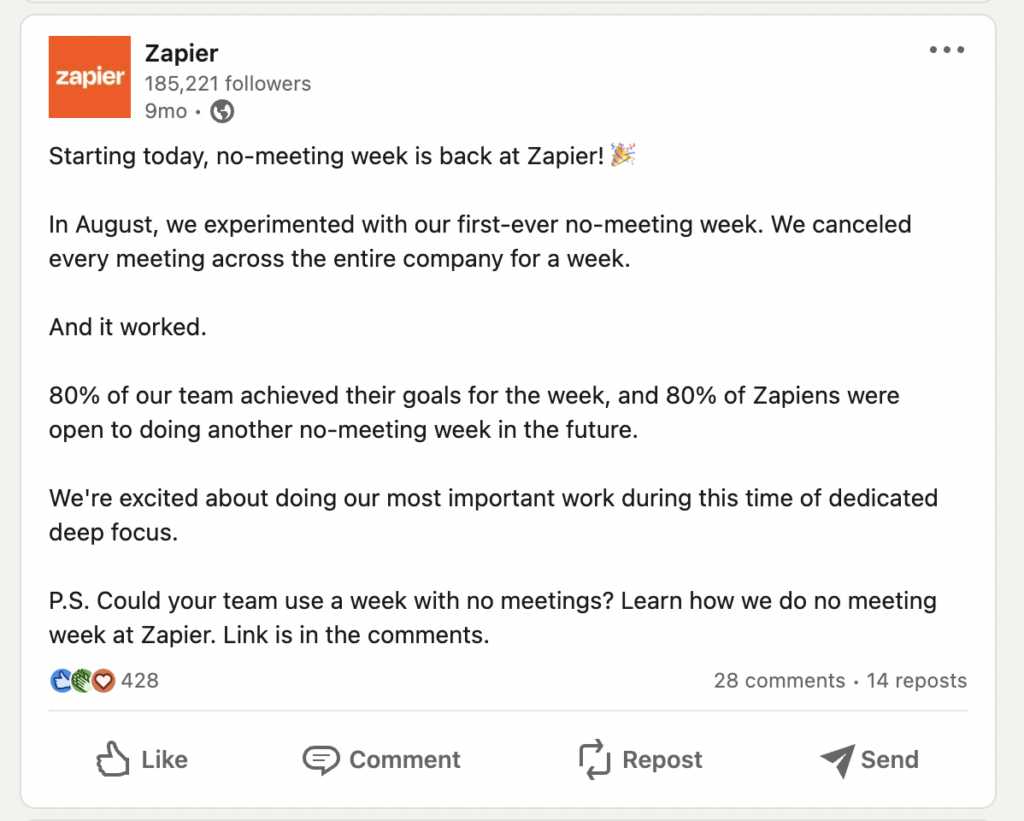
How can you implement this recruitment strategy?
To get started with social recruiting, consider the following:
- Choose the social media platforms that are most relevant to your audience and recruitment goals
- Post frequently sharing news and insights into job openings, job fairs, networking events, company milestones, product updates, contests, what it’s like to work at your company, etc
- Engage with followers and potential candidates by responding to their questions and comments
- Encourage employee referrals and engagement by current employees
- Measure and track how your social recruiting efforts perform in order to adjust and optimize your social recruiting strategy
Kickstart your social media recruiting strategy with our six tips, from crafting easy-to-read job descriptions and sharing a mix of content types to measuring your success.
9. Connect with graduates
Graduates are the future, literally. For many roles, graduates are just a graduation away from clicking apply. In fact, many graduates are encouraged to secure their places up to a year before they even finish their courses, and represents a candidate pool that shouldn’t be ignored.
Here are just some of the reasons why you should consider creating a recruiting strategy targeting graduates:
- They cost less as graduates start their careers
- They’re motivated to keep learning, with 94% of graduates surveyed citing work as an avenue for building their skills
- They have excellent knowledge of the latest digital tech and software to help your business thrive
- They bring fresh perspectives from their learning experience
How can you implement this recruitment strategy?
4 ways you can connect with graduates include:
- Social media – using creative, bespoke recruiting campaigns to target university students, like this creative ad campaign from Amey, below.
- Job fairs and careers days – attending multiple events for employers hosted at universities
- Your benefits package – another way to hook graduates is by making a better offer than your competitors, and including perks like gym memberships or flexible hours that make all the difference
- Candidate experience – recruiting in this space is highly competitive, and another way to differentiate your brand is through the candidate experience.

Find out how Telia used skills assessments at a student campus event to source talented candidates and build a qualified talent pool.
10. Attend or host industry events
In an increasingly remote world, there is a lot of value in attending in-person events. Company and industry events can help raise your profile within your industry, bring value to your network, and position your business as an exciting and innovative place to work.
From a recruitment perspective, it’s a great way to synergize with several other recruitment strategies. Events help raise your employer brand, plant the seed with passive candidates, and is an opportunity to build a talent pool.
How can you implement this recruitment strategy?
Start with Hootsuite’s awesome guide on how to host your own virtual events. These ideas offer a quick, easy, and low-cost way to start boosting your business profile and meet future candidates.
If you’re in tech, this could be a hackathon. For the arts industry, try hosting an exhibition. Or, go for a conference if you’re in marketing.
That’s not to say you shouldn’t do remote events. Something as simple as hosting a webinar on an industry hot topic or a virtual job fair are still powerful ways to bring people together.
When attending industry events, like the epic Web Summit for techies, look into sponsorship opportunities to further spotlight your brand!
11. Create an internship program
Last but not least, one of the most effective recruitment strategies that has never fallen out of fashion in the world of talent acquisition is the implementation of internship programs. According to Zippa, 80% of interns will accept an offer by the company they interned with.
These programs offer hiring managers a unique opportunity to identify and nurture promising talent within their organizations by allowing both employers and candidates to assess their compatibility before making long-term commitments.
This strategy works exceptionally well as it not only provides an extended evaluation period but also serves as an effective talent pipeline.
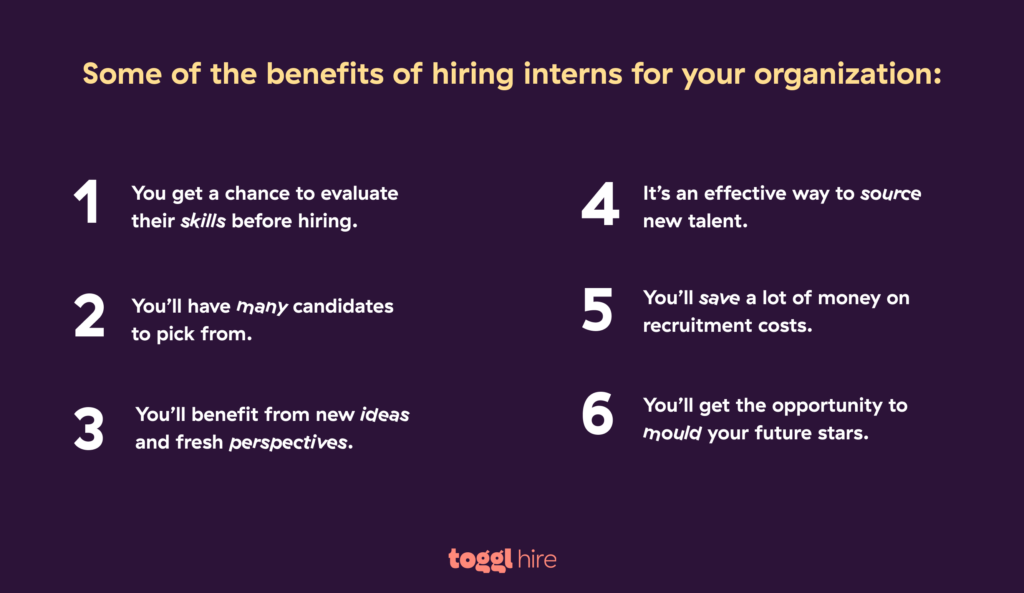
How can you implement this recruitment strategy?
For a successful internship program, start by doing research to:
- Identify which departments or teams should have an internship program
- Define the objectives and goals of the program, for the team, individuals, and wider organization, as well as the terms and compensation they will receive in order to attract interns to your program
- Promote your internships across various channels, like career fairs and universities in addition to your careers page and socials.
- Refine your program by gathering and incorporating feedback
- Measure and assess the success of your program by tracking key metrics such as intern satisfaction, number of interns who were offered full time roles, and subsequent retention rates
Where does Toggl Hire come in?
If you want to fill more positions, get better quality candidates, and decrease your time to hire, these 11 effective recruitment strategies offer some easy-to-implement ideas.
For every strategy we’ve covered, combine it with skills testing and give your hiring metrics an extra boost! And it’s great for candidates too, as it provides a more exciting way to showcase their talents and gives them instant feedback.
Incorporating hiring tests into your recruitment strategy has many benefits:
- Gamify the application experience to attract top talent and passive applicants
- Improve the quality of hire & speed to hire, as it’s easier to recognise top talent
- Reduce unconscious bias for more diverse talent
- Higher quality candidates at every stage of the pipeline
- Create a talent pool in Toggl Hire with extensive information on candidates’ skillset & past applications
Remember, the ultimate key to a successful recruiting strategy is creating a slick and efficient hiring process. Try Toggl Hire’s skills testing for free today.
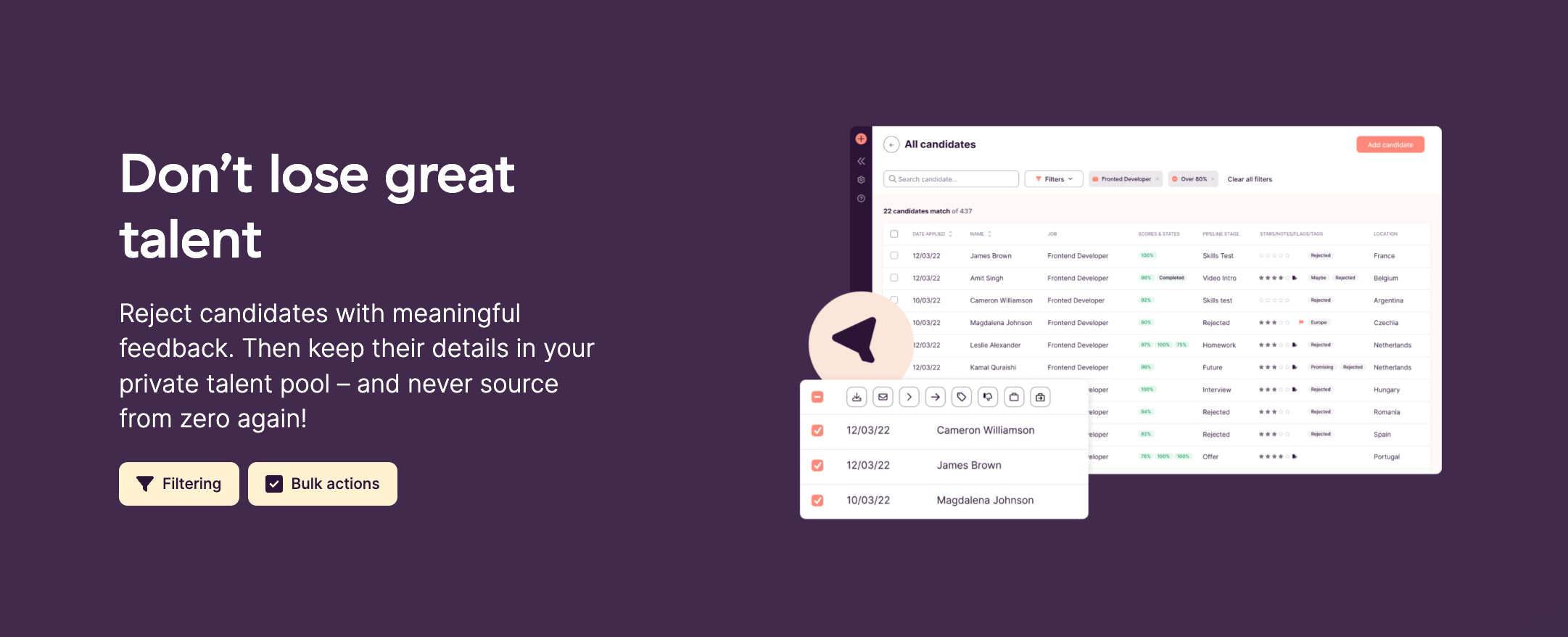
Juste loves investigating through writing. A copywriter by trade, she spent the last ten years in startups, telling stories and building marketing teams. She works at Toggl Hire and writes about how businesses can recruit really great people.














